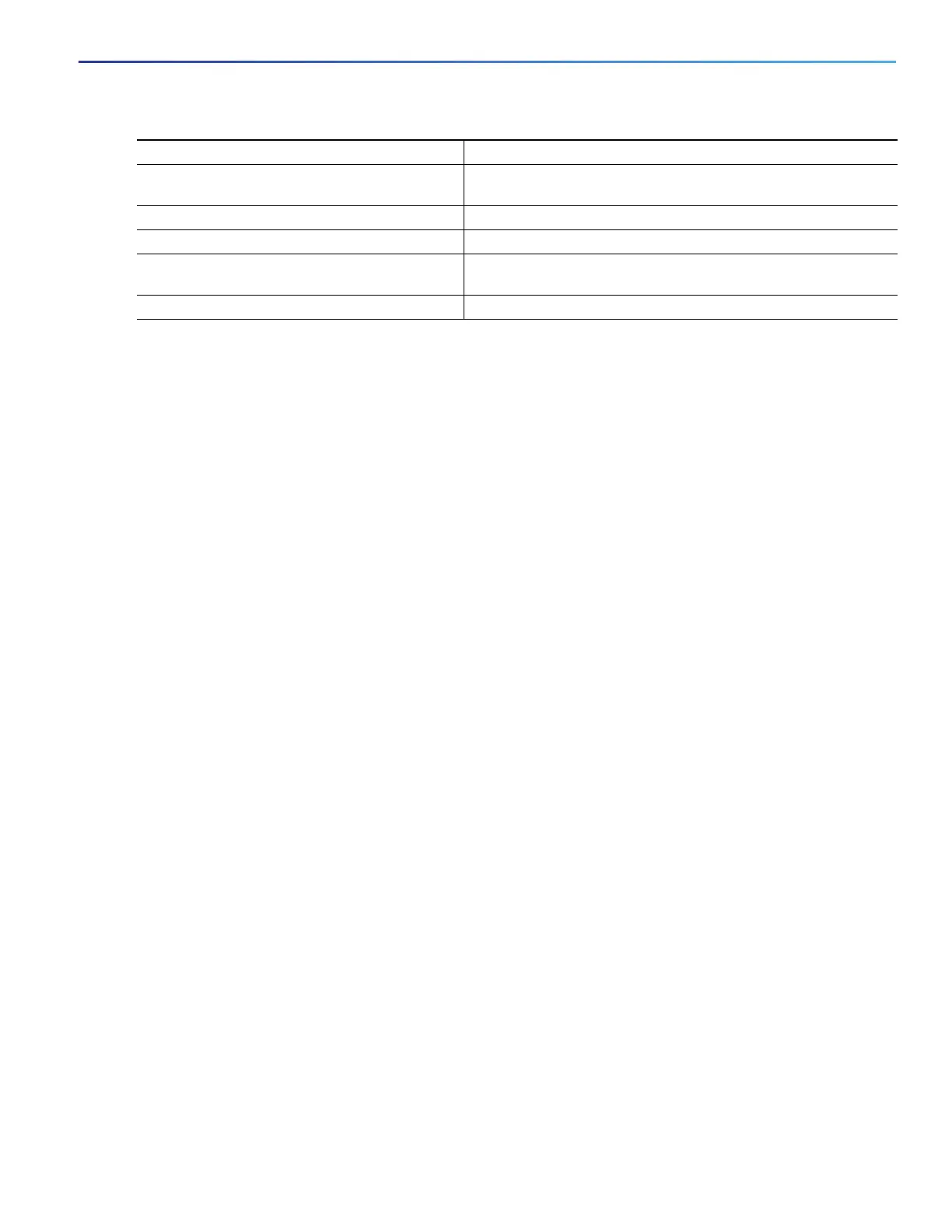631
Configuring QoS
Configuring QoS
After you have created an output policy map, you attach it to an egress port. See Attaching a Traffic Policy to an Interface,
page 609.
Use the no form of the appropriate command to delete an existing policy map, class map, or bandwidth configuration.
This example shows how to set the precedence of a queue by allocating 25 percent of the total available bandwidth to
the traffic class defined by the class map:
Switch(config)# policy-map gold_policy
Switch(config-pmap)# class out_class-1
Switch(config-pmap-c)# bandwidth percent 25
Switch(config-pmap-c)# exit
Switch(config-pmap)# exit
Switch(config)# interface GigabitEthernet1/17
Switch(config-if)# service-policy output gold_policy
Switch(config-if)# exit
Configuring Output Policy Maps with Class-Based Shaping
You use the shape average policy-map class configuration command to configure traffic shaping. Class-based shaping
is a control mechanism that is applied to classes of traffic leaving an interface and uses the shape average command to
limit the rate of data transmission used for the committed information rate (CIR) for the class.
Follow these guidelines when configuring class-based shaping:
Configuring a queue for traffic shaping sets the maximum bandwidth or peak information rate (PIR) of the queue.
Configuring traffic shaping automatically also sets the minimum bandwidth guarantee or CIR of the queue to the
same value as the PIR.
You cannot configure CBWFQ (bandwidth) or priority queuing (priority) and traffic (shape average) for the same
class in an output policy map.
You cannot configure traffic shaping for a traffic class when strict priority (priority without police) is configured for
another class within the output policy-map.
Beginning in privileged EXEC mode, follow these steps to use class-based shaping to configure the maximum permitted
average rate for a class of traffic:
7. interface interface-id Enter interface configuration mode for the interface to which you
want to attach the policy.
8. service-policy output policy-map-name Attach the policy map (created in Step 2) to the egress interface.
9. end Return to privileged EXEC mode.
10. show policy-map [policy-map-name [class
class-map-name]]
Verify your entries.
11. copy running-config startup-config (Optional) Save your entries in the configuration file.
Command Purpose

